- Home
- William H. Keith
Battlemind Page 3
Battlemind Read online
Page 3
Some of those shapes were bizarre almost beyond belief. To her right, what looked like a small sea of quicksilver was flowing over the uneven ground toward the company’s perimeter. It looked like an animated puddle of liquid mercury, its surface a metallic silver and very bright, the whole rippling along the ground in a huge, fast-spreading sheet. At first, she wasn’t even sure it represented a threat. It looked odd, certainly, but there were no weapons, no indication that the thing was attacking.
Then, with devastating suddenness, the pool of quicksilver exploded in great filaments of gleaming metal, rising up high into the air, then arcing down. Warstriders Kearny and Pritchard were caught in the net flung across their machines. Both opened fire, lasers and particle beams sliding across and through the apparently liquid but coherent metal in explosive puffs of vapor… but the liquid reformed and scattered more looping arcs. Where it touched the Naga-hulls of the warstriders, hull metal detonated in fiery bursts and fuming clouds of oily black smoke, the deadly touch dissolving ceramplast and nanoflage surfacing in white flame.
Kara’s sensors were picking up powerful, shifting magnetic fields ahead, the fields animating the liquid metal. Blue lightning played across the surface, and then a bolt of blue-white fire lanced through the protesting atmosphere, striking Kearny’s strider with a devastating concussion and a splatter of melted hull metal. Kara pivoted her own machine to the right, opening fire with every weapon in her strider’s arsenal, slamming a shrieking swarm of M-310 missiles into the thickest part of the quicksilver pool, stabbing and slashing with lasers, particle beams, and rapid-fire cannon. Explosions ripped through the liquid metal, scattering it in gleaming splatters. Kearny’s strider was down, unmoving; Kara’s cockpit readout indicated null function, systems down. Pritchard’s strider was still fighting, some of its weapons obviously knocked off-line, but the lasers and one rapid-fire cannon still in action, blazing away as the tentacles of silver lashed and sparked in dazzling displays of energy.
Kearny was gone… and Dandridge and Fontaine as well, their striders no longer registering as active on her tactical display. More kickers were appearing on her tactical display every second; the damned things appeared to be surging up from underground. Others were descending from space, drawn to this barren world from elsewhere within the Galactic Core.
“Let’s tighten up the perimeter, people,” she called. The circle was already shrinking though, as the remaining striders shifted position to better support one another. She could hear others in the company calling to one another over the tactical links.
“They’re almost to the perimeter over here! Someone give me a hand!”
“Jordy, watch it! On your right at zero-one-five!”
“I’ve got more on sector three.”
“Kuso! They’re coming up out of the ground!”
“This whole planet is some kind of goddamned factory!”
“Hold on, Cyn! I’m on it!”
“I’m hit! I’m hit! Kuso! There’s too gokking many of them!”
Kara’s AI rasped warning… too late. Something struck her strider, a savage, jolting blow that gouged a kilogram or two of Naga-hull from her dorsal-left surface and left her hivel cannon a useless, partially disemboweled wreck. She didn’t feel pain as such with the blow—the bioelectronic linkage between her brain and the strider’s artificial intelligence was not designed to transmit pain—but the shock was jarring nonetheless, both physically and emotionally. It staggered her, rocking her back on legs and magnetics both. As warning lights cascaded across the viewscreen opened in her mind, she decided that the ability of individual Web machines to repair themselves would be pretty damned useful; her hivel cannon was dead, and with it three important sub-circuit networks in her fire control array. The Naga segments that composed part of her hull and working systems had a limited self-repair capability, including regrowing damaged electronic circuits, but this was beyond their scope.
More high-velocity missiles shrieked through the thin, hot atmosphere, glowing brightly with friction as they snapped overhead, but her AI had already noted that they would miss and did not alert her to the threat. She eased off on her magnetics and flexed her legs, gentling closer to the ground as she continued firing at the advancing enemy. With a thought, she unfolded her starboard-side missile launcher and loosed a hissing volley of M-310 missiles into the lightning-flecked gloom in the distance.
An instant later, a laser speared her, the five-megawatt beam sinking into the black heat sink of her external nano.
Five megawatts striking a target for one second yields the same energy as the detonation of a kilogram of TNT. Kara’s external nano could handle about three quarters of that inflow, shunting it into her primary storage cells, but the rest had to go somewhere. The explosion was as thunderous, as concussive as the earlier slug strike had been, and she lost nearly one square meter of her nanoflage as her hull erupted in white-hot fury.
The Web machine that had fired at her was a hulking, black and brown monstrosity of ill-fitted angles, parts, and legs, only a little smaller than her warstrider, its hull built around the length of the weapon that appeared from its size to be its entire reason for existence. Less than a hundred meters away, it crouched, readying a second shot; Kara triggered a bolt from her CP cannon first and felt an intense and savage satisfaction as the blast carved a man-sized chunk of metal and ceramics off the enemy device and scattered it on the thin, hot winds as droplets of condensing vapor.
“Is this supposed to be proving something?” Sergeant Kemperer yelled. She glanced at the magnified image of his strider, off to her left. Part of his machine’s hull was glowing dull red, and the surface had taken on a pocked appearance from multiple hits by high-velocity slugs and high-energy beams.
“Just keep taking them down, Deke,” Lieutenant Hochstader told him. “Don’t let them organize and don’t let them break through the line, or we’ve had it.” His voice sounded remarkably calm against the shriek and thunder of battle. Naga-grown symbiotic implants—like the cephlinks of decades before—conferred a kind of electronic telepathy on those who were jacked into the network, a communications channel secure from the thunder and crash outside the striders’ black hulls.
Kara called up a long-range situation map, shrinking the ten-kilometer circle of the Phantoms to a tiny green oval, surrounded by a seething ocean of red. She’d hoped to identify some one arc of the defensive perimeter that was not under massive assault, allowing her to pull back striders from one area and plug them into another if things became desperate. There was no such arc, however. If she wanted to pick up reserves, she would have to do it by shrinking the perimeter, and the volume of firepower from the surrounding enemy forces was a good reason not to do that. If that incoming fire became any more concentrated than it already was, targeting a smaller area…
The Webbers, she noted, were showing nothing even remotely like combat tactics. The patterns on her display indicated something more akin to the blind, chemical reaction of antibodies to an invading bacterium. The more defenders the human force burned down, the more appeared behind the first ones to continue the assault.
Still, Kara had the impression that their attack, fierce and unrelenting as it was, was more for show than anything of substance. It might even be a diversion of a sort, an attempt at a primitive kind of combat tactics. As she fought, she could see a vast army of Web machines off on the horizon some fifteen kilometers away, building… something, a towering black metal something in the distance, as literally millions of individual, quasi-living parts leaped and skittered and flew and flowed into one another, their bodies dissolving, reforming themselves before her eyes.
It looked like a pyramid, growing higher moment by moment, five-sided on a pentagonal base, encased in something like translucent black plastic, though fire directed at it by her strider and those of her companions bounced and flared as harmlessly from that surface as might hurled rocks from a starship’s hull.
“Pel?” she cal
led. “This is Kara.”
“Yeah, boss.”
“Throw a high-mag scan on that pyramid coming up in my sector. What do you think?”
“It’s big.…”
“I can see that.”
“Sorry. I couldn’t resist.”
She could feel the warmth of Hochstader’s grin. He was a big, gentle, easygoing man, popular with his troops, and with a sharp tactical sense that Kara had come to rely on since he’d joined the Phantoms the year before. He possessed a quiet reserve that the most intense firefight couldn’t penetrate.
“It looks like they’re using their mutability against us,” he continued, more seriously. “You see what they’re doing under high mag?”
“Yeah. Looks like the little ones are melting together, or reorganizing themselves, somehow, to make the big one.”
“What do you want to bet they’ve analyzed our firepower and energy output and are building one big combat machine that we can’t scratch but could swat the lot of us like insects?”
“I’m not taking those odds. I think that’s what it is… a really big warstrider. Overwatch? Are you copying this?”
“Roger that, Spearpoint. And we concur with Lieutenant Hochstader’s analysis. Are you ready to pull out?”
She hesitated, weighing her options. They couldn’t stay here much longer.
“Overwatch, we still don’t have what we came for. We want to shove these things hard enough to find out what makes them break, and so far they’ve been doing all the shoving. Give us another couple of minutes.”
“Copy that. We’ll be standing by, Spearpoint, if you want to abort.”
“Rog.”
The pyramid was moving forward now, its form apparently stabilized. Kara stroked the thing at radar wavelengths, measuring. Nearly half a kilometer high, it appeared to be levitating on tightly reined-in magnetic fields stronger than those found flickering at the heart of a sun. Its base, all but lost in deep shadow, was not flat but appeared to bulge downward, again in a five-sided figure, making the object an immense and lopsided decahedron, its glossy surface mostly black but picked out here and there with pale yellow bands and surfaces. The surfaces appeared smooth; she saw nothing like antennae or weapons marring those vast expanses… nor was there any indication that it was a command unit of some kind.
It came closer, bulking higher until it blotted out most of the ragged spiral of the Great Annihilator high in the sky. Lightning played about the base; one bolt reached out and connected with Warstrider Harrison’s damaged Falcon, the play of energy briefly illuminating the entire battlefield with the radiance of many suns. By this time, all of the surviving warstriders were firing at the advancing, floating mountain but with no success that Kara could detect. So far as she could tell, volley upon volley of missiles, of laser beams, of charged particle bolts, of hard-driven streams of high-velocity deplur rounds could not even scratch that terrifying and apocalyptic vision of destruction.
Lightning flared once more from the pyramid’s base. Excess charge bled through air and seared the ground beneath; the primary beam shrilled thunder as it passed low above Kara’s warstrider, and for a horrifying moment she thought her machine had been hit… but the bolt passed on across the perimeter and briefly caressed Miles Pritchard’s machine.
She could hear him screaming as his machine exploded in blue flame and molten Naga-matrix.
“Pritch!”
The screaming cut off sharply as the link failed. With a jolt, Kara realized that fully half of the recon company’s warstriders were down, unresponsive… and the smaller Web machines were spilling into the perimeter now through gaping holes in the defensive line.
Not much time left. Maybe, though, they could still test the Web’s resilience. “Heads up, everybody!” she called over the general channel. “I’m taking that gokker with a Heller!”
“Negative on that, Spearpoint,” Overwatch called. “You’re too close—”
“Gok that,” Kara snapped. “If it’s a choice between letting that monster step on me, and taking a bite out of him as I go down, then it’s chow time!”
She was initiating the launch sequence as she spoke, keying in mental code phrases that unlocked her Falcon’s two CTN-20 Hellbrand missiles. Her dorsal surface split in two, the launcher unfolding as protective panels blossomed open. Another command overrode the fail-safe mechanism; each Hellbrand carried a seven-kiloton tactical nuclear warhead, pocket microyield thermonukes with a blast radius of at least ten kilometers, and they were programmed not to detonate within fifteen kilometers of their launch point. Kara, however, was in no mood to be fussily particular.
“Nuke!” she yelled, with much the same fervor of a golfer shouting “fore.” She gave the mental launch command, and the CTN-20 whooshed from its half-buried launch tube, yellow flame stabbing from its aft venturi, trailing white smoke as it arced toward the huge target just a few kilometers away. A heartbeat later, she sent the second missile arrowing after the first.
The first missile was swatted down by a bolt of lightning, but the range was so close that the pyramid didn’t have time to shift aim to the second high-velocity target. It streaked in low, striking the pyramid just beneath its base.
An intense, dazzling, blinding pinpoint of radiance expanded in an instant to engulf the pyramid; seconds later, the sound hit, and with it the shock wave of a blast equivalent to seven thousand tons of conventional high explosives.
“Hunker down, everyone!” Kara yelled into the inferno, but it was uncertain whether anyone even heard her. The roar, deafening, cataclysmic, blotted out everything else. The light, so dazzling at first, turned dark as a hot wind shrieked inward toward the sudden vacuum that marked ground zero, swirling dust and smoke and furiously burning gasses in and up and out, me whole rising in a filthy gray pillar of boiling ash.
Kara could no longer see the cloud. That flash had burned out most of her optical sensors, and the searing wind lashing across her warstrider now kept her plastered against the heaving, buckling ground. She felt the wind stripping the last of her nanoflage from her hull. Then two of her four legs were ripped away, and her magnetics lost their grip on the magfield within the alien world’s surface. It was like being caught in a hurricane, and as the roar peaked in a thunderous crescendo, her Falcon was smashed back across the ground.
There’d been little hope for any of the human-jacked striders on the surface of Core D9837. That had been known from the beginning, the results already factored into the plan of battle. They were here to get information, data on the Web that was already being relayed back to intelligence personnel waiting with the Unified Fleet on the other side of the Nova Aquila Stargate.
Kara disliked suicide missions as a matter of principle, but this was one she’d been forced to accept. The human alliance needed this data, and this was the only way of obtaining it.
She surveyed the almost solid block of red warning discretes illuminating the lower right corner of her visual display. Her Falcon was very nearly dead, its AI partly burned out, her cerebral link with its electronics faltering.
Maybe… maybe the best thing to do now would be to simply switch off.
Chapter 3
What is life? The old standby definitions, handed down from the dawn of modern biology, can no longer be said to provide even an approximately correct or comprehensive answer. Life metabolizes, taking in fuel and giving off waste while producing energy. The same can be said of fire. Life seeks to reproduce itself. Again, fire spreads… and the DNA and RNA molecules that are the basis for terrestrial life replicate as a part of life’s dance, without themselves being life.
Perhaps most disturbing to those seeking to define life is the evidence presented by such nonhuman species as the Web, creatures that undoubtedly perform all of the functions generally associated with life processes, including reshaping their environment, metabolizing raw materials, eliminating waste products, and reproducing themselves. The fact that all of these functions are performed
by machines assembled through nanotechnic processes similar to those evolved by human industry should not prejudice us to the fact that the Web is alive.
It is simply a very different kind of life, one that we still have trouble even beginning to understand.
—The Dance of Life
PROFESSOR ELLERY HAWKINS
C.E. 2572
Kara wasn’t ready to quit just yet, however. The magnetic field embedded in the planet’s surface was faltering, some of its circuitry disrupted, perhaps, by the detonation of the nuke. She could barely edge along, the ventral surface of her battered strider scraping and bumping across the smoking, burned-over ground. Her strider’s legs were gone. She still had some auxiliary manipulators folded up inside their storage compartments, though, and as that thundering, howling wind died away somewhat, she was able to deploy them, first to hold herself in place, then to drag her battered machine slowly across the ground.
The heat and radiation weren’t bad, considering; the ambient ionizing radiation of the Galactic Core was actually stronger by far than that released by a single micronuke, though with her energy-drinking nanoflage gone, the full brunt of protecting her warstrider’s more delicate contents now rested on its magnetic shields.
Using the strider’s Naga components to build new lenses and shove them into place, she managed to bring a suite of optical sensors back on line. The view she got was bleary, dark, and unsteady, but it showed her the classic mushroom cloud towering above the battlefield, looming high in a sky gone black, masked by windswept dust.

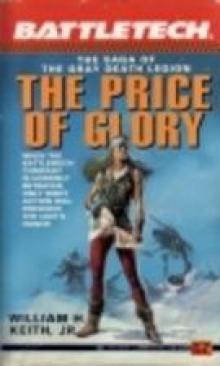 The Price of Glory
The Price of Glory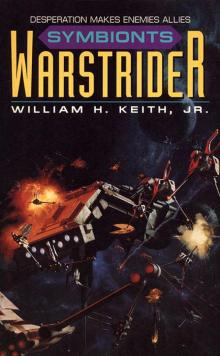 Symbionts
Symbionts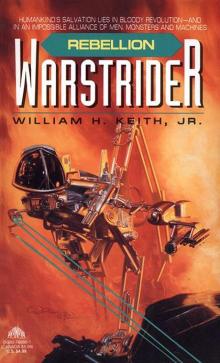 Rebellion
Rebellion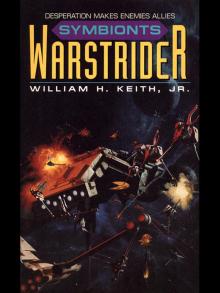 Warstrider 04 - Symbionts
Warstrider 04 - Symbionts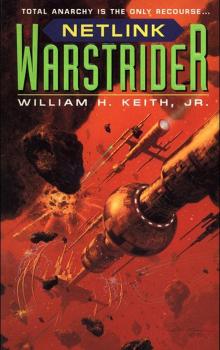 Netlink
Netlink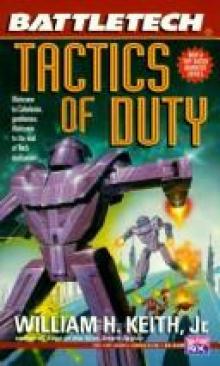 Tactics of Duty
Tactics of Duty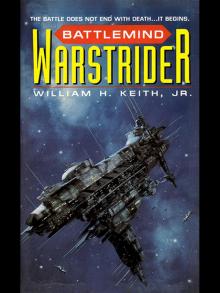 Warstrider 06 - Battlemind
Warstrider 06 - Battlemind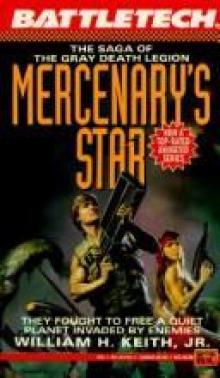 Mercenary's Star
Mercenary's Star Battlemind
Battlemind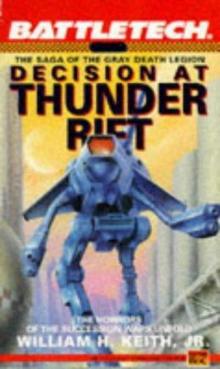 Decision at Thunder Rift
Decision at Thunder Rift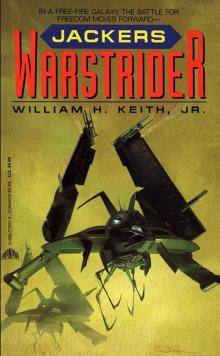 Jackers
Jackers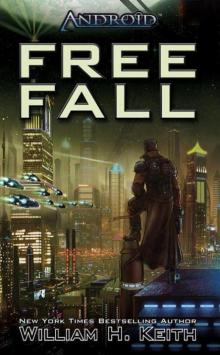 Android: Free Fall
Android: Free Fall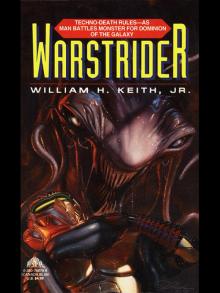 Warstrider 01 - Warstrider
Warstrider 01 - Warstrider Warstrider 05 - Netlink
Warstrider 05 - Netlink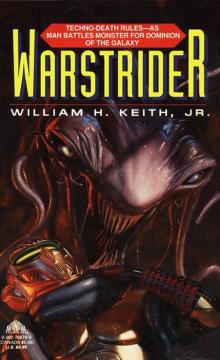 Warstrider
Warstrider